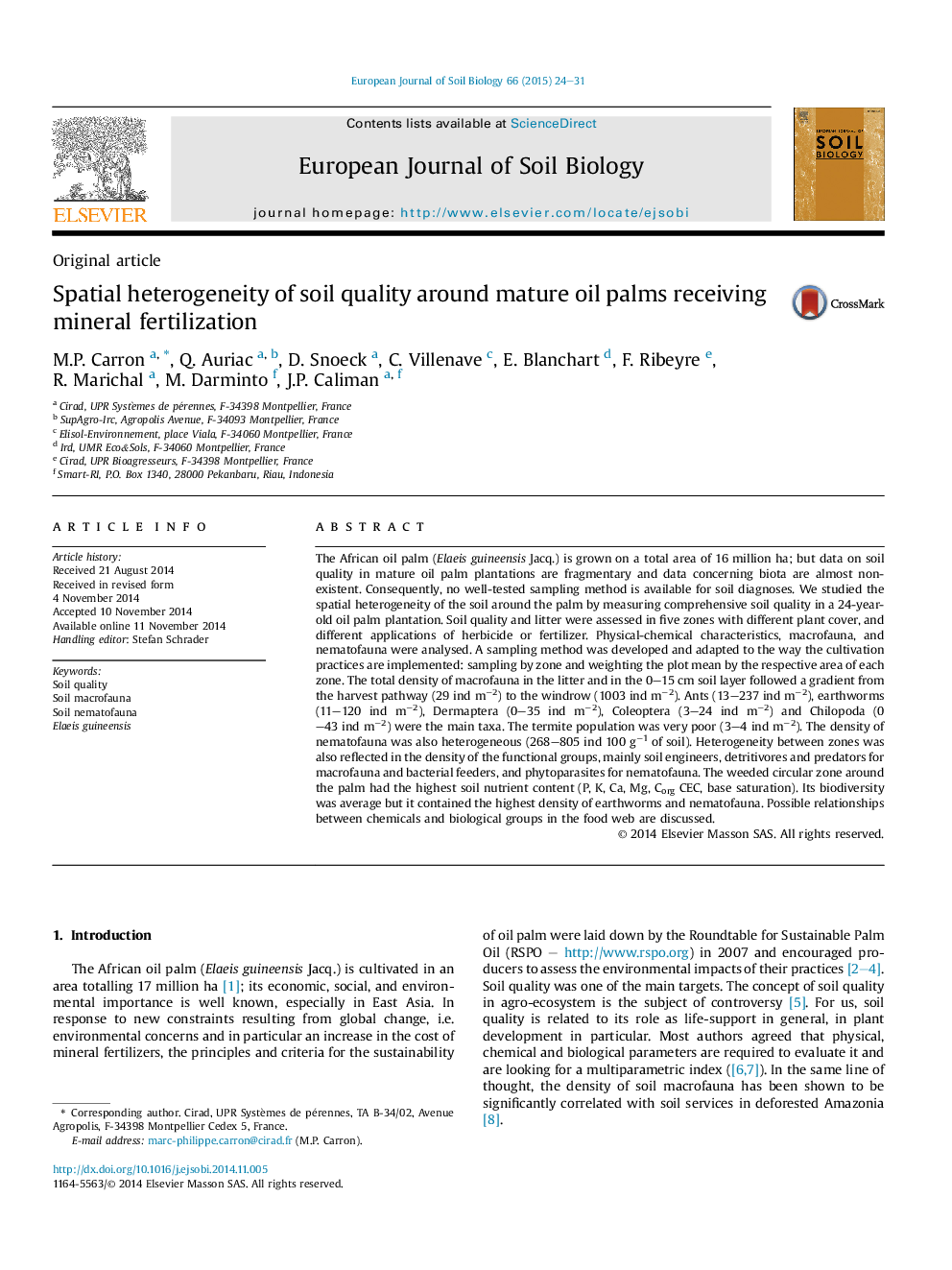| Article ID | Journal | Published Year | Pages | File Type |
|---|---|---|---|---|
| 4391809 | European Journal of Soil Biology | 2015 | 8 Pages |
•First data on the soil macrofauna and nematofauna beneath mature oil palm.•Spatial heterogeneity of the practices induces heterogeneous soil quality.•The weeded circle had the highest soil nutrient content and earthworm density.•The windrow, chemically poorer than circle, had the highest density in macrofauna.•Plot weighted means were calculated according to the zone areas around the palm.
The African oil palm (Elaeis guineensis Jacq.) is grown on a total area of 16 million ha; but data on soil quality in mature oil palm plantations are fragmentary and data concerning biota are almost non-existent. Consequently, no well-tested sampling method is available for soil diagnoses. We studied the spatial heterogeneity of the soil around the palm by measuring comprehensive soil quality in a 24-year-old oil palm plantation. Soil quality and litter were assessed in five zones with different plant cover, and different applications of herbicide or fertilizer. Physical-chemical characteristics, macrofauna, and nematofauna were analysed. A sampling method was developed and adapted to the way the cultivation practices are implemented: sampling by zone and weighting the plot mean by the respective area of each zone. The total density of macrofauna in the litter and in the 0–15 cm soil layer followed a gradient from the harvest pathway (29 ind m−²) to the windrow (1003 ind m−²). Ants (13–237 ind m−²), earthworms (11–120 ind m−²), Dermaptera (0–35 ind m−²), Coleoptera (3–24 ind m−²) and Chilopoda (0–43 ind m−²) were the main taxa. The termite population was very poor (3–4 ind m−²). The density of nematofauna was also heterogeneous (268–805 ind 100 g−1 of soil). Heterogeneity between zones was also reflected in the density of the functional groups, mainly soil engineers, detritivores and predators for macrofauna and bacterial feeders, and phytoparasites for nematofauna. The weeded circular zone around the palm had the highest soil nutrient content (P, K, Ca, Mg, Corg CEC, base saturation). Its biodiversity was average but it contained the highest density of earthworms and nematofauna. Possible relationships between chemicals and biological groups in the food web are discussed.
